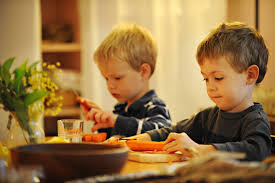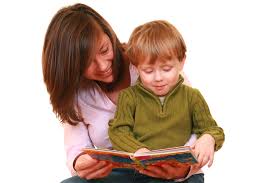Term 2 is in full swing as children have settled into their new classroom and have developed their relationship with their new teacher. It is usually at this point that many parents want to know how they can help their child by supporting what is happening in the classroom. However, many parents feel quite anxious as their child moves up a grade as they find it difficult to understand what support their child needs. In this blog I am going to share a strategy that all parents can use with their child no matter what their child’s age.
This strategy is focusing on developing a child’s comprehension of a text and how they engage with the text. A text is any visual or written stimulus that a child is required to make sense of. It is important that they are given a variety of texts such as factual, fiction, and visual (eg advertising brochures) in order to have a deep understanding of how texts work and what they can learn from each.
I have named this strategy : THE THREE LEVELS OF READING
To see if a child truly understands what they have read they need to be able to answer questions about the text. These questions can be divided up into three categories.
Level 1 – Reading ON the line
The answers to Level 1 questions are found ON the line of the text. This means that in order for the child to answer a level 1 question the child needs to go back to the text, find the answer and say it. This is a very literal level and requires simple comprehension skills.
Skills for this level: Remembering and Understanding
Question starters for this level: Who, what, where, when
Types of activities for this level: List, define, cite, define, retell, explain, describe
Level 2 – Reading BETWEEN the lines
The answers to Level 2 questions are found BETWEEN the lines of the text. This means that in order for the child to answer a level 2 question the child needs to go back to the text, look for clues that might help them answer it and form their answer with supporting evidence. This is an inferential level and requires good comprehension skills.
Skills for this level: Applying and Analysing
Question starters for this level: How and why
Types of activities for this level: Categorise, examine, demonstrate, dissect, implement, compare, contrast
Level 3 – Reading BEYOND the lines
The answers to Level 3 questions are found BEYOND the lines of the text. This means that in order for the child to answer a level 3 question the child needs to use the information from the text, their own knowledge and understanding of how the world works and apply it to form an answer. This is thematic level and requires high comprehension skills.
Skills for this level: Evaluating and Creating
Question starters for this level: What would it be like if …? What is another possible title for this text?, What would you do if…? How does this text connect with your life?
Types of activities for this level: Create, develop, generate, produce, imagine, justify, assess, conclude
It is important that children are asked questions from all levels no matter what their age. Many parents tend to stick with Level 1 questioning because it is simple but it does not give your child enough opportunity to develop their comprehension skills. Asking questions does not have to be a formal task that is done at the end when they are finished reading the text. Ask questions throughout to gauge their understanding and help clarify if needed. Get them to point out what they used to help them answer the question. Encourage your child to return to the text as many times as they want as it is not a memory test. Teaching comprehension skills will give them a solid foundation for reading and as a result help them in all subject areas.
If you remember nothing else from this blog, please remember this “Comprehension floats on a conversation”. Talk with your child about what you or they have read and ensure they really understand the purpose and ideas that are trying to be conveyed by the author.
Until next time …
Kelly Pisani






























